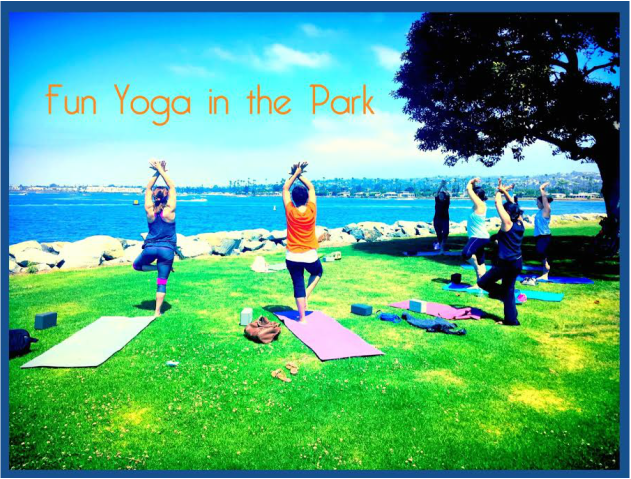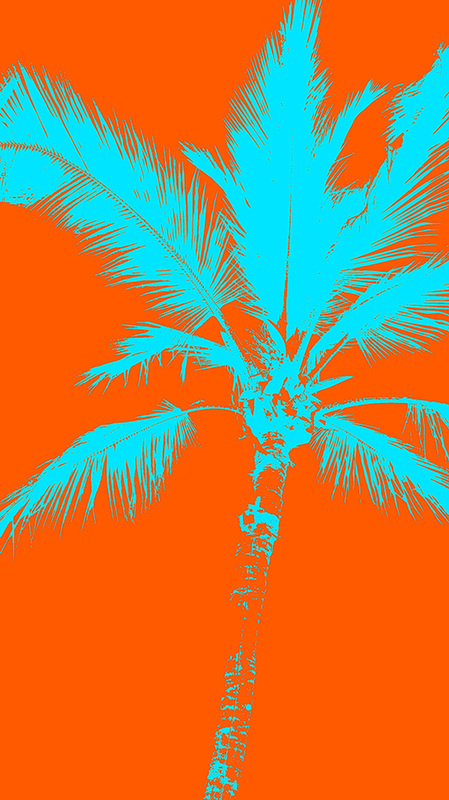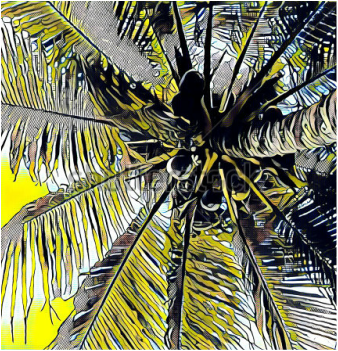I’ve always had a thing for trees. I’m especially drawn to palm trees. I find gratitude every day in the luxurious view of a Royal Palm blowing in the breeze just outside the bay window of my studio apartment. I feel like a queen with this unique form gracing me with it's presence. As I look to the right, I enjoy an even denser view of more trees in the beautiful Balboa Park.
What is it about these particular living things that attracts my attention and brings a smile to my face?
Palm Trees remind me of somewhere dreamy, lush, and sunny, usually associated with a water source, like the date palm in the desert oases, or an island in the sea.
Palm Trees remind me of somewhere dreamy, lush, and sunny, usually associated with a water source, like the date palm in the desert oases, or an island in the sea.
Isla Mujeras, Mexico
According to Alain de Botton in The Art of Travel, “The longing provoked by the brochure was an example, at once touching and pathetic, of how projects (and even whole lives) might be influenced by the simplest and most unexamined images of happiness; of how a lengthy and ruinously expensive journey might be set in motion by nothing more than the sigh of a photograph of a palm tree gently inclining in a tropical breeze. I resolved to travel to the island of Barbados.”
Palm trees have been a symbol of peace, victory, and abundance throughout history.
Human use of palms is older than human civilization itself, starting with the cultivation of the date palm by Mesopotamians and other Middle Eastern peoples 5000 years or more ago. Date wood, pits for storing dates, and other remains of the date palm have been found in Mesopotamian sites. One indication of the importance of palms in ancient times is that they are mentioned more than 30 times in the Bible, and at least 22 times in the Quran. And in Southern Indian Ancient Civilizations, Panaiveriyamman was an ancient Tamil (Southern India) tree deity related to fertility.
Date Palm by unknown
Today, scientists have identified 2600 species of Palm Trees with enormous diversity in physical characteristics and they inhabit nearly every type of habitat within their range, from rainforests to deserts. Most of them are restricted to tropical, subtropical, and warm temperate climates.
Palms are distinguished by their large, compound, evergreen leaves arranged at the top of an unbranched stem. Today, palms are valuable as ornamental plants and are often grown along streets in tropical and subtropical cities. Farther north, palms are a common feature in botanical gardens or as indoor plants.
They also have a strong economic importance, including coconut products, oils, dates, palm syrup, ivory nuts, raffia, and palm wood. Sap of the nipa palm is used to make vinegar. Palm sap is sometimes fermented to produce palm wine in Africa.
Palms are distinguished by their large, compound, evergreen leaves arranged at the top of an unbranched stem. Today, palms are valuable as ornamental plants and are often grown along streets in tropical and subtropical cities. Farther north, palms are a common feature in botanical gardens or as indoor plants.
They also have a strong economic importance, including coconut products, oils, dates, palm syrup, ivory nuts, raffia, and palm wood. Sap of the nipa palm is used to make vinegar. Palm sap is sometimes fermented to produce palm wine in Africa.
In yoga, tree pose is a standing balancing posture that strengthens the ankles, knees, calves, and quads. This posture also gently opens the hips, aligns the spine, and improves balance, coordination and concentration. To make it a Palm Tree pose, I like to cross my arms at my wrists, above my head and spread my fingers wide.
To get into the pose, with your hands on your hips, lean your weight onto your right foot. Check to see that your weight is evenly balanced over the four corners: both sides of your heal, both sides of the ball of your foot.
Place your left heal just above your right ankle. If this feel solid, slide your left foot to rest on your right calf, avoiding your knee. If you want to take it further, place your left heal into your upper inner thigh. Fully engage your right leg by pressing back into your left foot, without hyperextending your knee.
Find a neutralized pelvis so that your hips are squared forward and your spine is long (try not to round or hunch your back as well as overarch).
Send your shoulder blades down and together on your back, while you tuck in your core and lower ribs.
Finally reach your arms overhead, crossing at your wrists and spreading your fingers wide for the fan leaves. Then, of course, switch to the left leg.
You can practice Palm Tree Pose with me at Fun Yoga in the Park at Mission Bay Park. We are surrounded by California Fan Palms.
Place your left heal just above your right ankle. If this feel solid, slide your left foot to rest on your right calf, avoiding your knee. If you want to take it further, place your left heal into your upper inner thigh. Fully engage your right leg by pressing back into your left foot, without hyperextending your knee.
Find a neutralized pelvis so that your hips are squared forward and your spine is long (try not to round or hunch your back as well as overarch).
Send your shoulder blades down and together on your back, while you tuck in your core and lower ribs.
Finally reach your arms overhead, crossing at your wrists and spreading your fingers wide for the fan leaves. Then, of course, switch to the left leg.
You can practice Palm Tree Pose with me at Fun Yoga in the Park at Mission Bay Park. We are surrounded by California Fan Palms.
B.K.S. Iyengar, often referred to as "the father of modern yoga" has been credited with popularizing yoga, first in India and then around the world. He relates Pantajali's 8 Limbed Path to the parts of a tree in his book, Tree of Yoga.
To learn more about this book and participate in the book discussion, join our women's spiritual retreat coming up in October!
We have one room and the sofa bed still available.
To learn more about this book and participate in the book discussion, join our women's spiritual retreat coming up in October!
We have one room and the sofa bed still available.
Iyengar discusses how the tree of self needs to be taken care of. Our roots of our whole being are the foundation. Just as a palm tree extends its roots in many directions to support the entire tree, these roots are Pantajali's Yamas and our guidelines for universal morality to becoming a unified part of humanity. The yamas consist of Ahimsa (kindness, thoughtfulness, non-violence), Satya (Truthfulness), Asetya (non-stealing), Aparigraha (not-hoarding or jealousy), and Brahmacharyara (intimate integrity). These guidelines are meant for our treatment of other living beings as well as our own body. Iyengar explains that we must treat each side of our body as equals. When we overstretch or strengthen one side, it does violence to our body and can cause injury. I've noticed lately that my right shoulder has some sharp pains sometimes. I finally figured out that its because I use it for carrying and opening objects much more than my left side. I'm striving to become ambidextrous in this sense to find balance and thoughtful consideration for my body.
Then comes the trunk, along with the principles of Niyama, self discipline. This refers to Saucha, (cleanliness), Santosha (contentment), Tapas (directing your energy), Svedhaya (self-study), and Ishvarapranidhara (surrender to and celebration of the spiritual). We can cleanse our bodies by physically washing them and through twists in our physical yoga practice. When we twist from the core, we massage our lower organs and rejuvenate the juices in our spine. Just as the trunks of many palm trees are shaved and cleaned up to make room for the space around it and new growth. A palm tree cultivates contentment through light. We can also turn light into gratitude and smiles. We can surrender to the wind of change in our lives and try to accept every possibility to grow.
From the trunk, the branches of asana emerge, physical postures. The Palm Tree does not have distinct branches, but instead, shafts that rise out of the crown shaft at the top of the trunk and form the axis for the large leaves that are sometimes comprised of even more leaflets. "Are you working to know this posture from a fresh mind? What type of new light is cast on the pose by your own experience while performing it?" In other words, we need to stay active in our pose, checking to keep all of our parts aligned, just as the axis shaft of the palm tree has to keep the leaflets connected. We need to take the version or modification of the pose that is working for our body today, being careful not to overdue it and injure ourselves, but also not being lazy, instead, gently experimenting with our limits and finding the place between tension and ease.
The leaves grow from the branches, whose interaction with air supplies energy to the whole tree through Pranayama, breathing techniques. When we inhale, our brain moves forward like a leaf. When we exhale, it goes backward. Pranayama is the bridge between the physical and the spiritual as we notice the leaves dancing in the wind as our body transforms oxygen into hydrogen.
Then comes the trunk, along with the principles of Niyama, self discipline. This refers to Saucha, (cleanliness), Santosha (contentment), Tapas (directing your energy), Svedhaya (self-study), and Ishvarapranidhara (surrender to and celebration of the spiritual). We can cleanse our bodies by physically washing them and through twists in our physical yoga practice. When we twist from the core, we massage our lower organs and rejuvenate the juices in our spine. Just as the trunks of many palm trees are shaved and cleaned up to make room for the space around it and new growth. A palm tree cultivates contentment through light. We can also turn light into gratitude and smiles. We can surrender to the wind of change in our lives and try to accept every possibility to grow.
From the trunk, the branches of asana emerge, physical postures. The Palm Tree does not have distinct branches, but instead, shafts that rise out of the crown shaft at the top of the trunk and form the axis for the large leaves that are sometimes comprised of even more leaflets. "Are you working to know this posture from a fresh mind? What type of new light is cast on the pose by your own experience while performing it?" In other words, we need to stay active in our pose, checking to keep all of our parts aligned, just as the axis shaft of the palm tree has to keep the leaflets connected. We need to take the version or modification of the pose that is working for our body today, being careful not to overdue it and injure ourselves, but also not being lazy, instead, gently experimenting with our limits and finding the place between tension and ease.
The leaves grow from the branches, whose interaction with air supplies energy to the whole tree through Pranayama, breathing techniques. When we inhale, our brain moves forward like a leaf. When we exhale, it goes backward. Pranayama is the bridge between the physical and the spiritual as we notice the leaves dancing in the wind as our body transforms oxygen into hydrogen.
The bark corresponds to Pratyahara, which is the inward journey of the senses from the skin towards the core of the being. In other words, taste, sound, touch, sight, and smell send their impressions to the mind where they are stored. Then the mind longs for further experiences and bypasses intelligence while it desires more and more or this stimulation. Our bark has the power to rescue us from the delusion of sensory experiences when we take a vacation from our minds and find stillness, gratitude and perception of enough, in our soul.
The sap of the tree carries the attention to the core of our being, dharana is concentration inward. It is the juice which flows within the branches and the trunk of the tree towards the root. When you are fully concentrated on a pose and your breath moving throughout your body, there is no room for thoughts to arise.
The sap of the tree carries the attention to the core of our being, dharana is concentration inward. It is the juice which flows within the branches and the trunk of the tree towards the root. When you are fully concentrated on a pose and your breath moving throughout your body, there is no room for thoughts to arise.
When the tree is healthy, then the flowers blossom out of it. Thus dhyana, meditiation is the flower. This contemplation results from listening to the nerves and sensations in your body and making adjustments to find equal balance everywhere, oneness.
When the flower is transformed into fruit (coconuts), this is known as samadhi, meaning freedom, peace, and unity. We can only produce this fruit through practice and experience. The seed of our soul, consciousness, is hidden in our fruit and we can find it when we are totally absorbed, adjusting from moment to moment. It does not matter what outsiders think. They cannot look on the cover of our body and tell us whether we are divine or non-divine. When you live the in moment of consciousness, with no presence of mind, you can do anything in the world without losing the inner spiritual contact.
When the flower is transformed into fruit (coconuts), this is known as samadhi, meaning freedom, peace, and unity. We can only produce this fruit through practice and experience. The seed of our soul, consciousness, is hidden in our fruit and we can find it when we are totally absorbed, adjusting from moment to moment. It does not matter what outsiders think. They cannot look on the cover of our body and tell us whether we are divine or non-divine. When you live the in moment of consciousness, with no presence of mind, you can do anything in the world without losing the inner spiritual contact.
Palm Canyon is the largest native California Fan Palm oasis in the world.
Once the home of the Cahuilla Indians, the canyon is filled with native plants, wildlife and a year round water source.
| The pristine desert air mixed with giant palm trees and an alpine wilderness create the perfect setting of natural desert beauty. As you enter the oasis, the towering California fan palms create a shady and cool environment to explore. The large palms reach a height of 60 feet, and some are as broad as 3 feet. A moderately graded, foot path winds down into the canyon for picnicking near the stream, meditating, or exploring. Palm Canyon offers many other trails that will give the hiker beautiful views of the oasis, waterfalls, and the beautiful rugged San Jacinto mountains, and the Santa Rosa mountains in the distance. One of the favorite destinations in Palm Canyon is Lost Paradise. |
You can explore this amazing hike with us on the Women’s Spiritual Palm Tree of Yoga Retreat as we will end this lovely weekend in this canyon.
Check out my Palm Tree Paintings and Yoga Leggings!
Many famous artists have also studied and adored the subject of an elegant Palm Tree.
Claude Monet highlighted the color and lighting of this almost symmetrical palm through his movement of quick brushstokes in his painting, Palm Tree At Bordighera.
Claude Monet highlighted the color and lighting of this almost symmetrical palm through his movement of quick brushstokes in his painting, Palm Tree At Bordighera.
Henri Rousseau defined lines, rhythms and variety of shapes and values in the green jungle. This painting is titled, Two Monkeys in the Jungle.
Further, Paul Gauguin emphasized contract in complementary color (Reds and Greens) through his palm trees in Tahitian landscapes.
A.E. Backus captured the romantic realist palm trees through detail of color and asymmetrical balance of space.
Childe Hassam explored texture and proportion in this unique rendering.
Amy Vangsgard crops her palm tree to accentuate the stem-like branches and variety of shape, line, and color involved in one single radially balanced tree.
Here's a few more inspirational Modern Palm Tree Art from Pintrest!



































